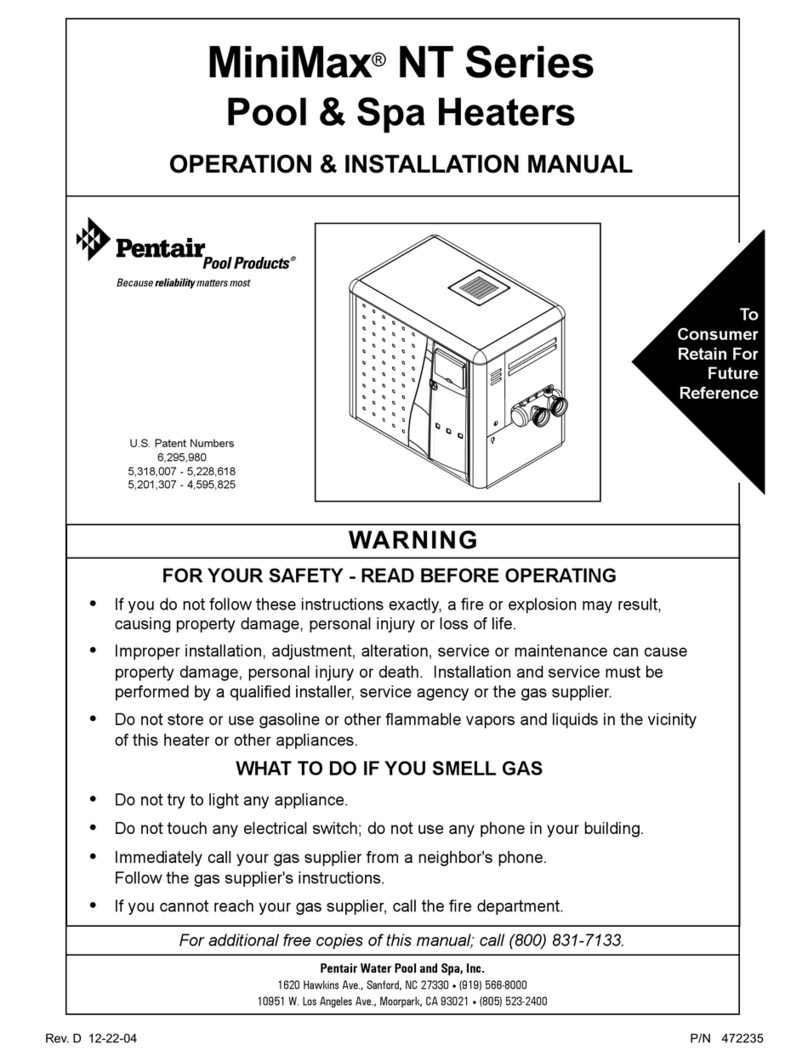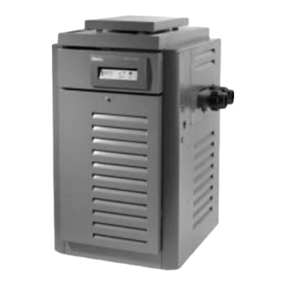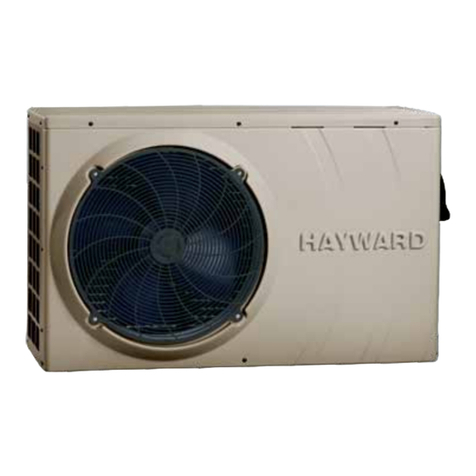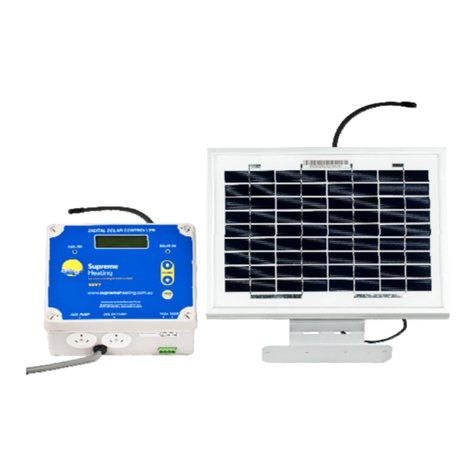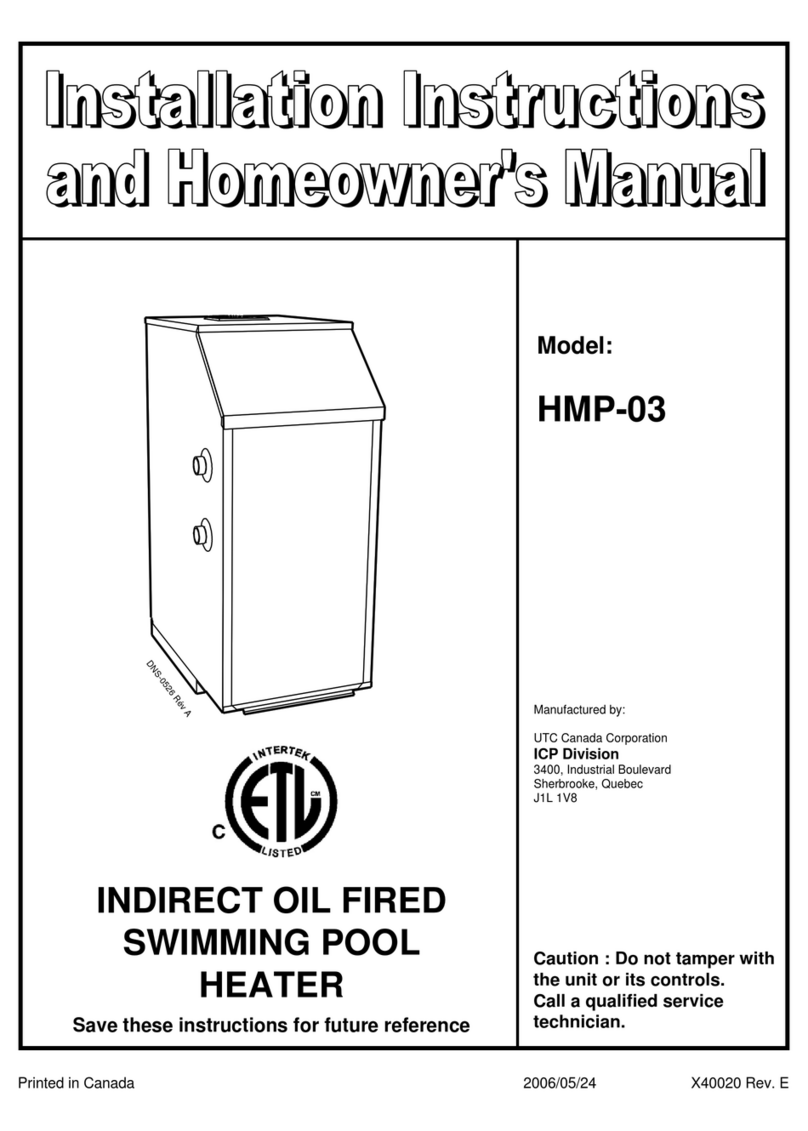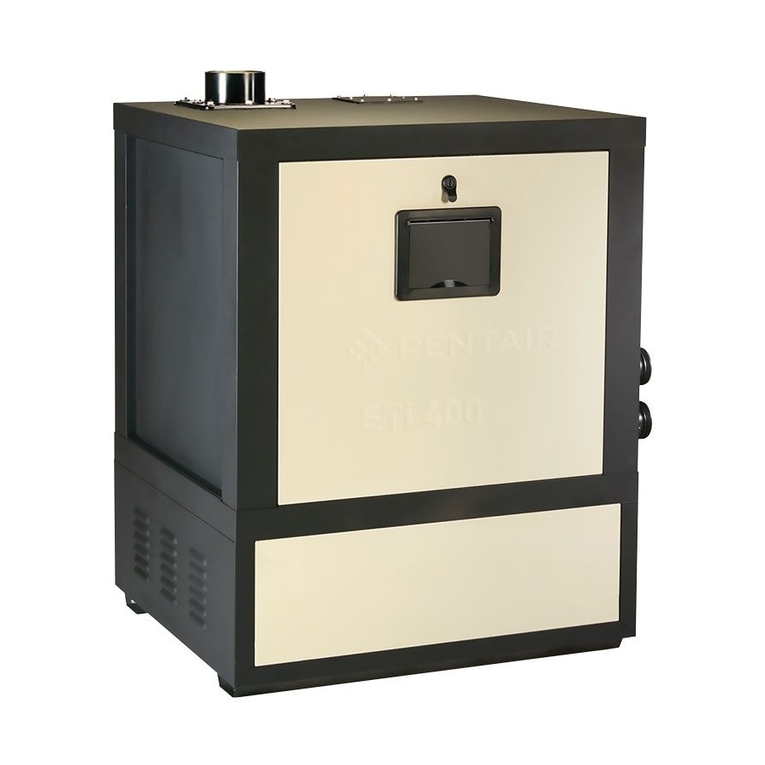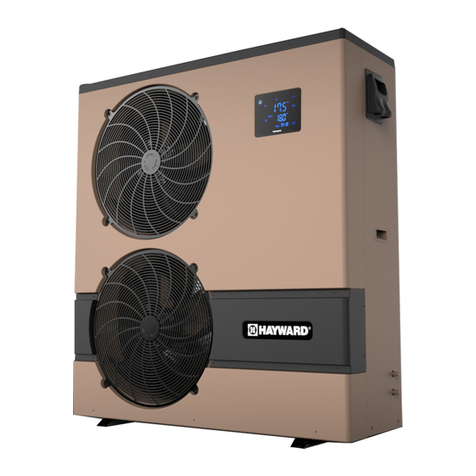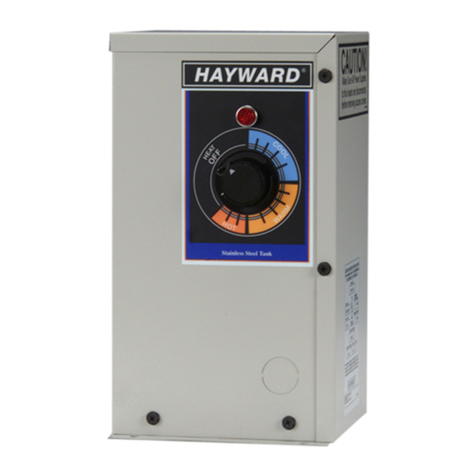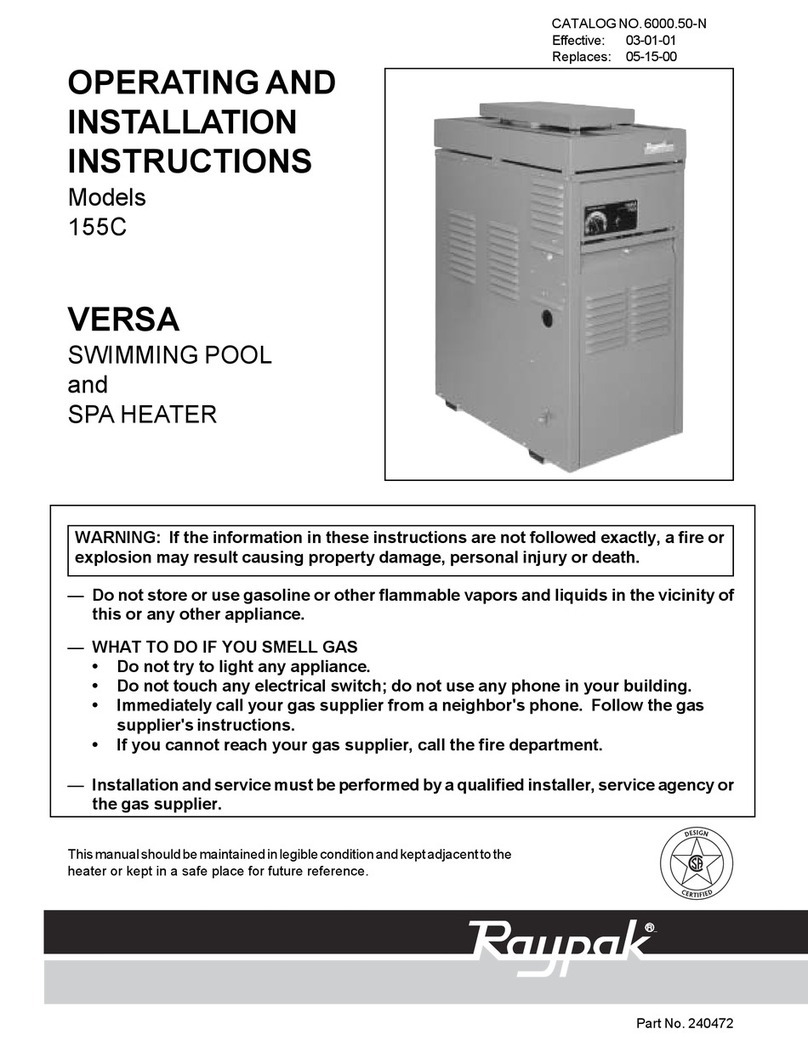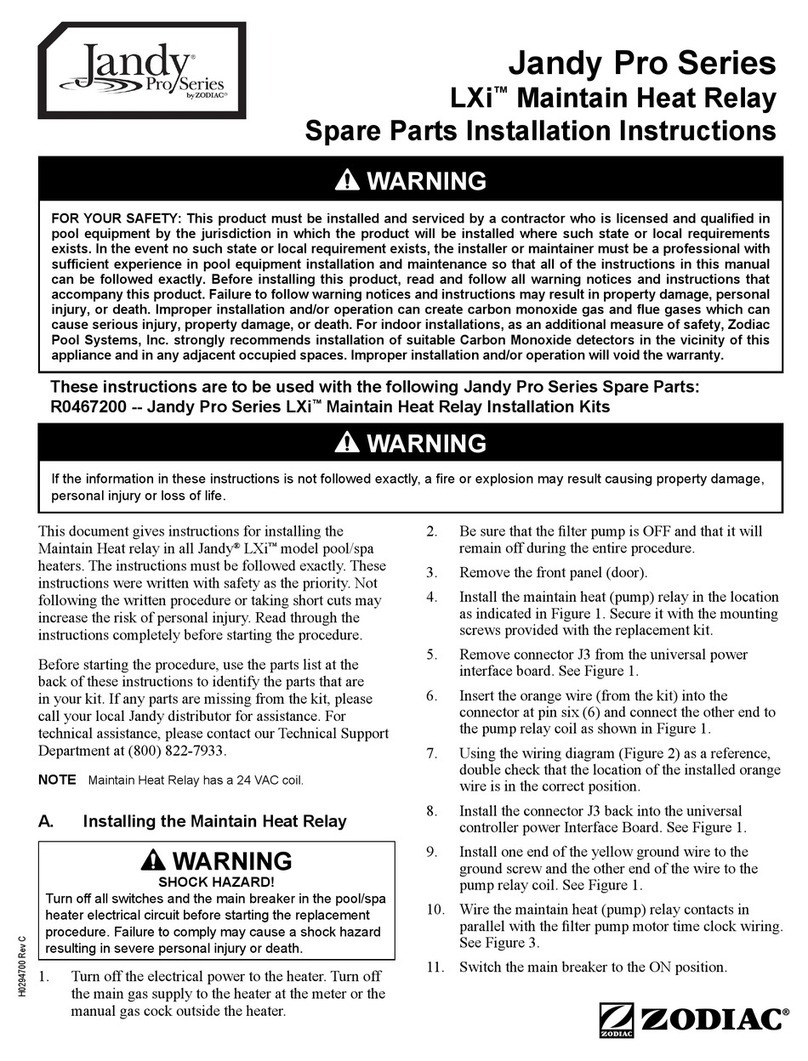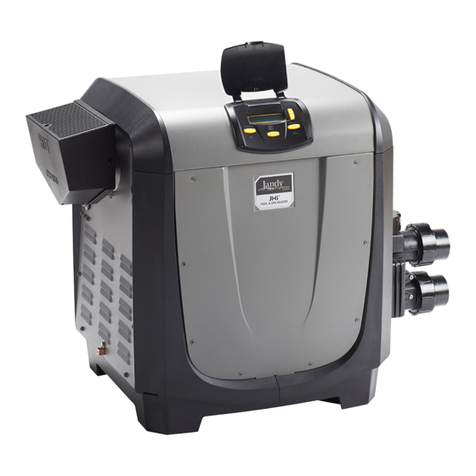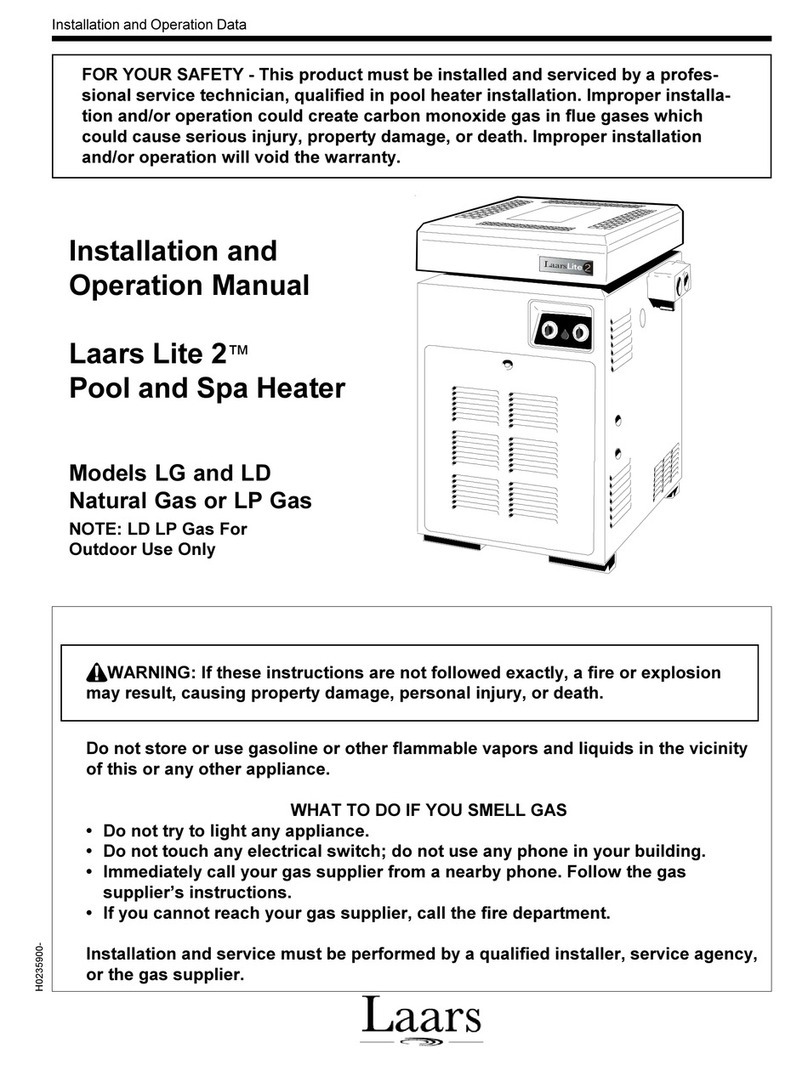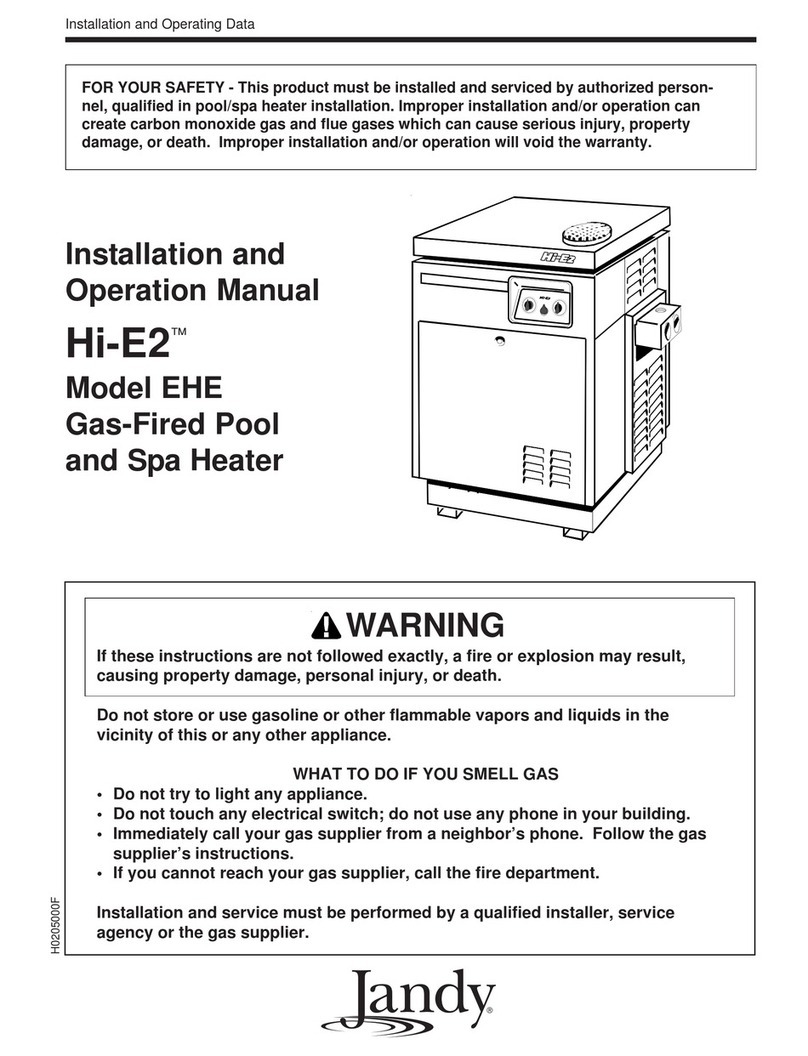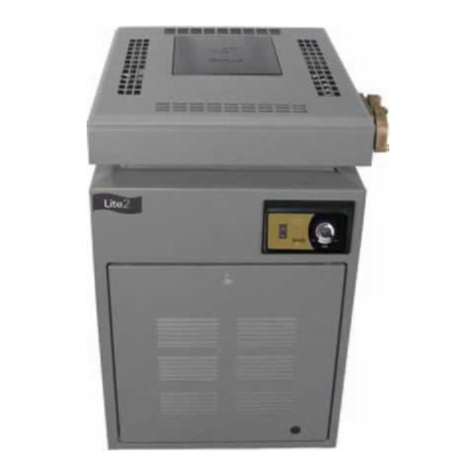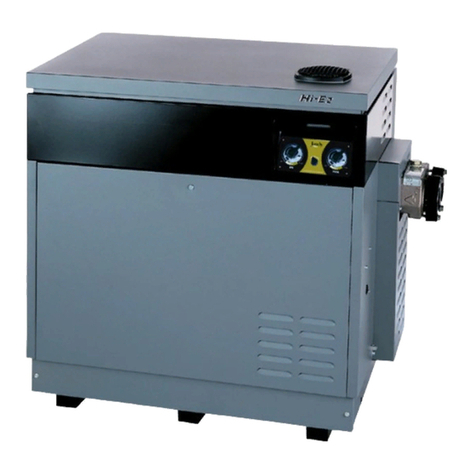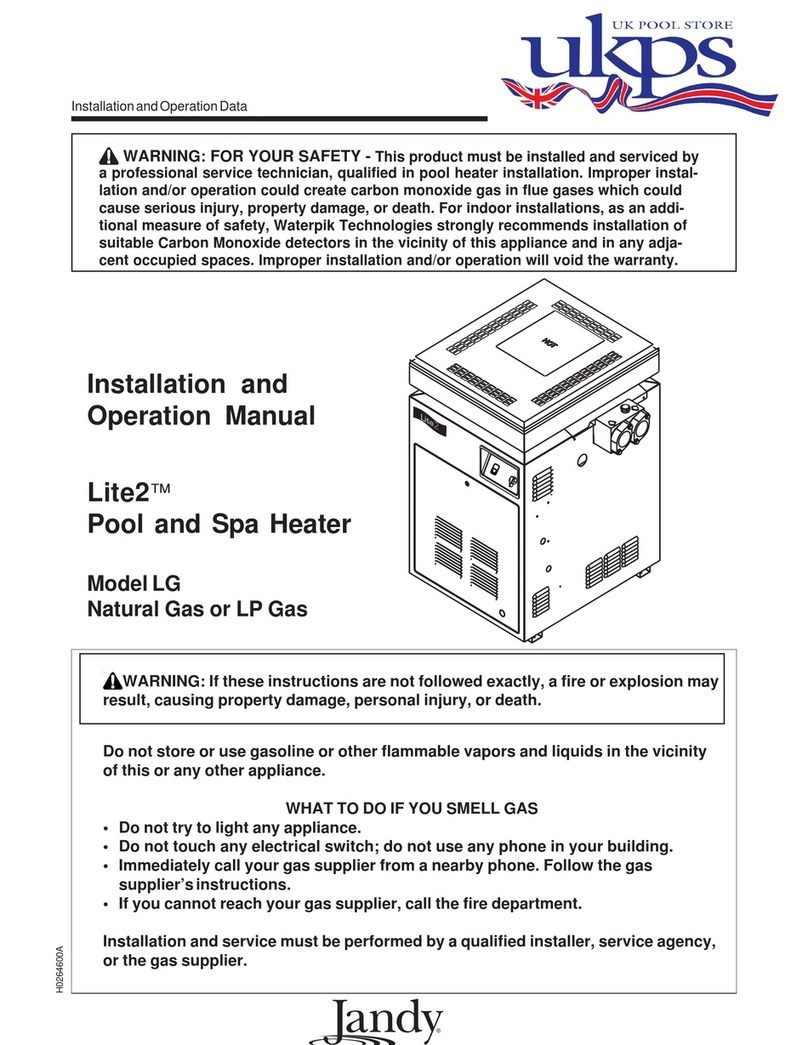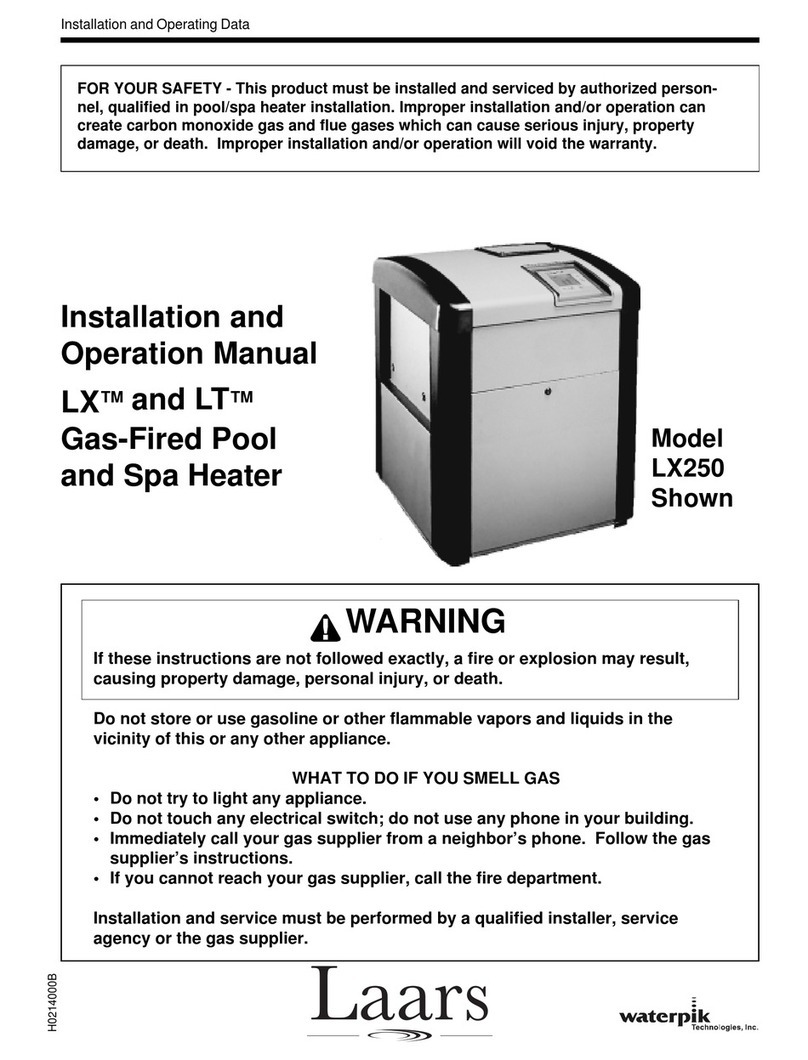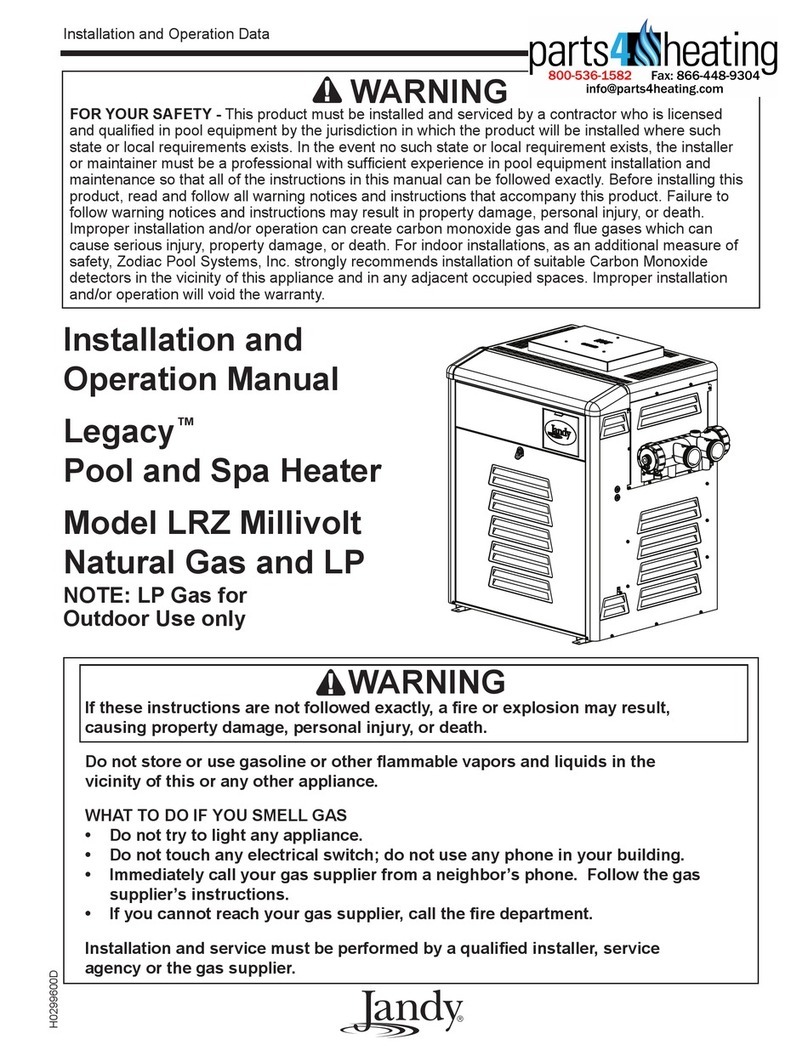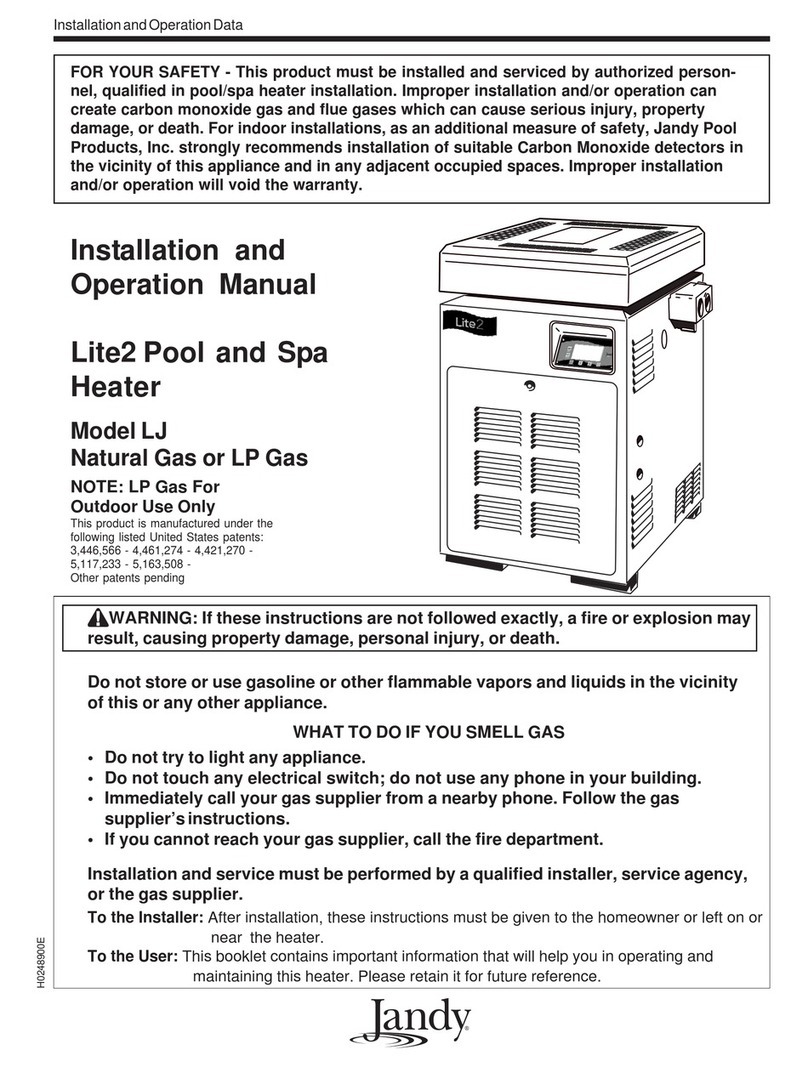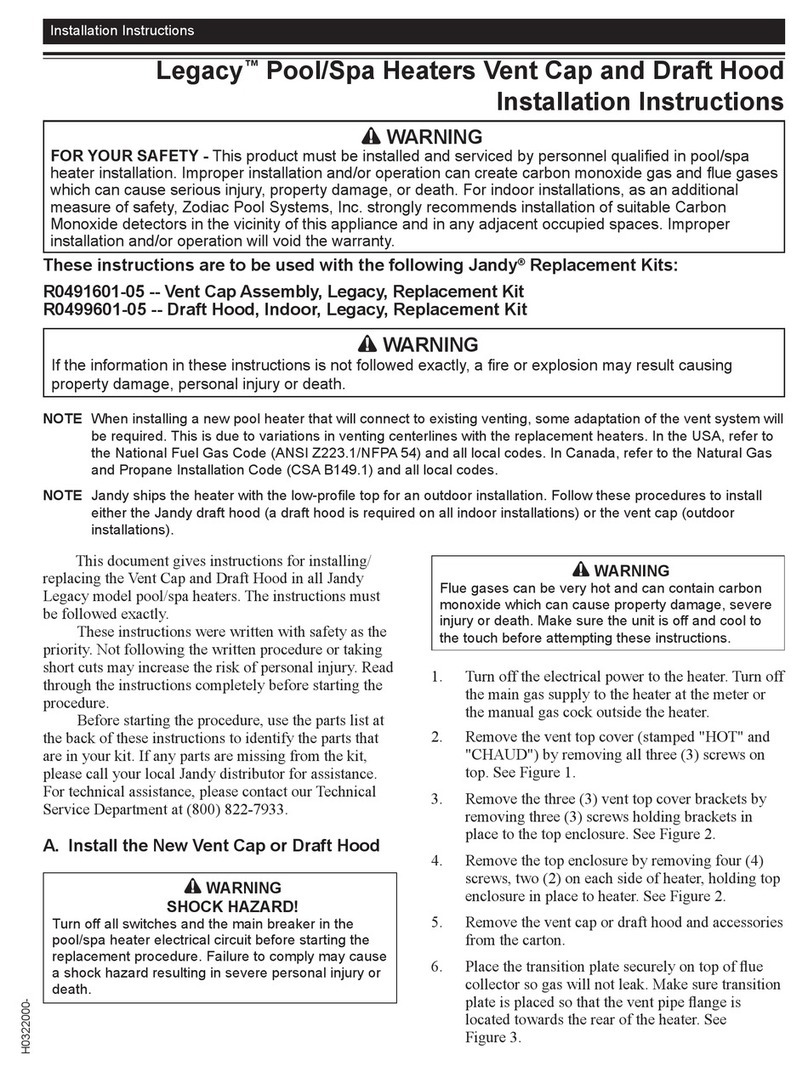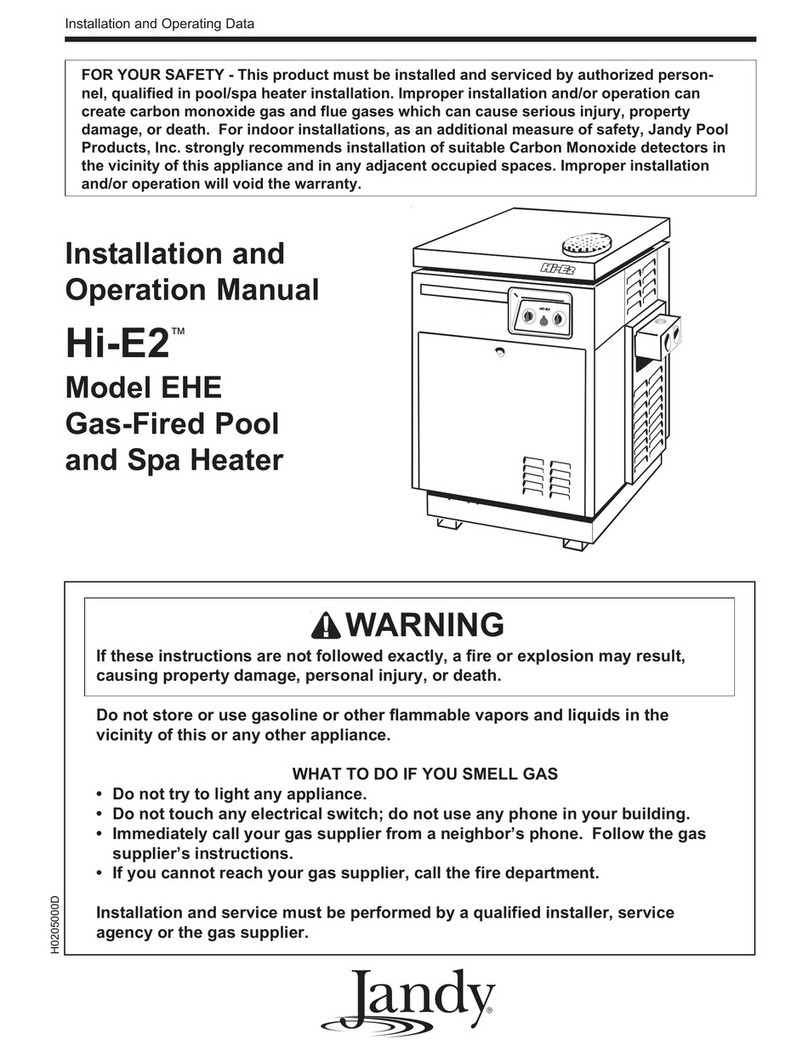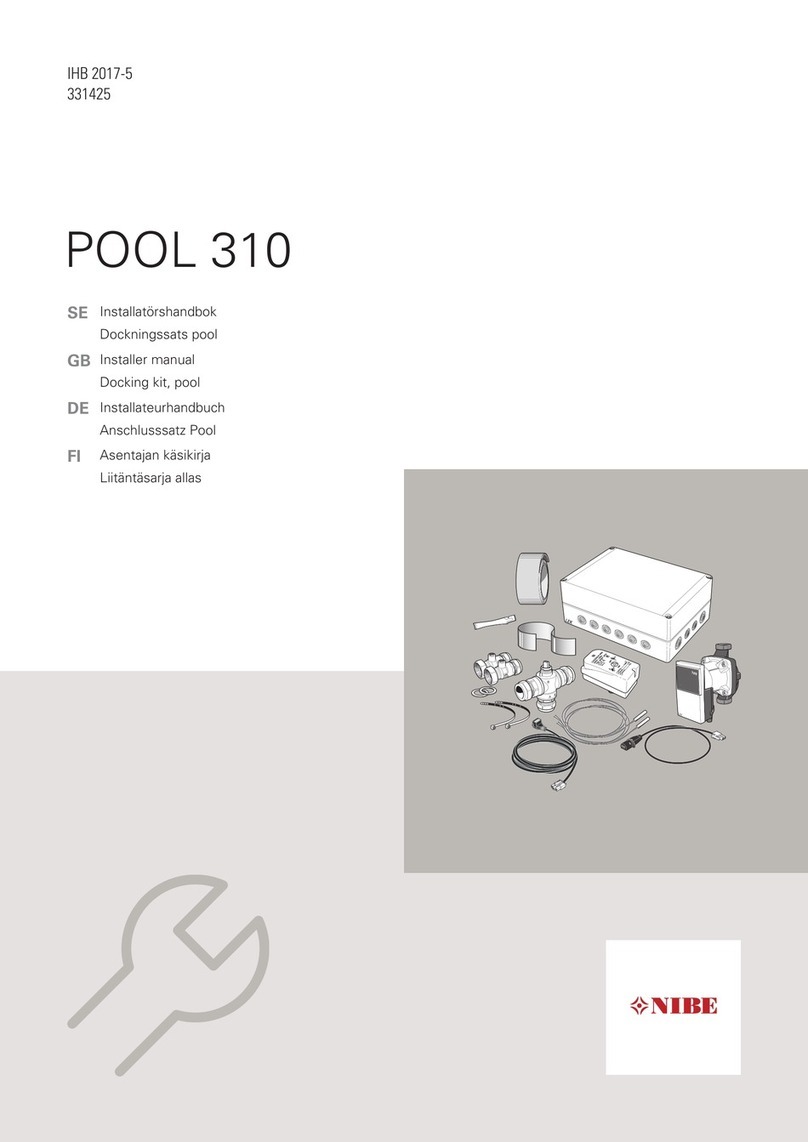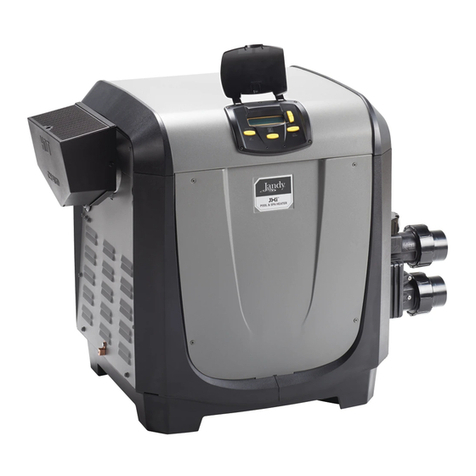
Page3LITE 2 MODEL LG POOL AND SPA HEATER
WARNING
Do not connect the heater to any external
source of electricity. The Jandy Lite 2 Model
LG heater has a built in thermoelectric
generator. It provides a completely self-
contained electrical system. Any attempt to
make electrical connections to an external
source will damage the heater, and could be
dangerous.
The heater can be installed indoors (using the
draught divertor and a suitable flue system) or out-
doors (using a flue system or with the outdoor flue
terminal assembly, which is available as an optional
extra).
Zodiac Pool Systems, Inc., specifically designs
this appliance to heat fresh water swimming pools
and spas. Do not use it as a heating boiler or general
service water heater. For special applications, consult
your Jandy dealer.
1C. Warranty
The LG heater is sold with a limited factory
warranty. A copy of the warranty is shown on the
back cover of this manual.
The warranty does not cover damage caused by
improper installation, or field modification, or to the
heat exchanger by corrosive water.
SECTION 2.
InstallationInstructions
2A. Statutory Information
It is the law that all gas appliances are to be
installed only by competent persons (e.g., members of
the Confederation of Registered Gas Installers
[CORGI]) in accordance with the Gas Safety (Instal-
lation and Use) Regulations, 1994. Failure to install
appliances correctly could lead to prosecution.
The LG heater, as supplied, has been tested and
certified by British Gas to PREN656 for use with
natural and LPG gases. LG heaters are only permit-
ted to be installed in the open air or in a room which
is separated from living rooms and provided with
appropriateventilation directlyto theoutside.
WARNING
The LG heater is certified to European
requirements for use only as a swimming pool
or spa heater. The LG heater must not be used
for any other purpose and must be installed
and serviced by a qualified professional. The
LG heater must be operated strictly in
accordance with the manufacturer's
instructions. If the LG heater is installed in a
room, adequate air supply and ventilation must
be provided and maintained. Never store any
materials within the area of the heater or
ventilationopenings.
It is important that no external control devices
(e.g., flue dampers, economizers, etc.) be directly
connected to the LG heater unless covered by these
installation and servicing instructions or otherwise
recommended in writing by Zodiac Pool Systems, Inc.
If in doubt please ask. Any direct connection of a
control device not approved by Zodiac Pool Systems,
Inc., could invalidate the British Gas certification, the
normal LG heater warranty, and could also violate
applicable gas safety regulations.
2B. General Installation Requirements
The LG heater must be installed by competent
persons (e.g., CORGI member). The LG heater must
be installed in accordance with the relevant require-
ments of the Gas Safety Regulations, current I.E.E.
Regulations, Model Water Bylaws, local Water
Authority Bylaws, and any relevant requirements of
local gas region, local authority, and relevant British
Standard Codes of Practice and Building Regulations.
Table 3 lists regulations for small and large pipe
installations.
All gas-fired products require correct installation
to assure safe operation. The requirements for heaters
includethefollowing:
1. Appropriate site location (clearances)
2. Non combustible surface
3. Sufficient combustion air and ventilation air
4. Adequate ventingof combustion products
5. Adequate waterflow
6. Properly sized gas pipe
7. Regularmaintenance
2C. Reversible Water Connections
Zodiac Pool Systems, Inc., ships the LG heater
with the water connections on the right side. It could

